FREE SHIPPING ON ALL ORDERS
4.8 ⭐⭐⭐⭐⭐ Average Rating
✔ Product has been added to your cart x
Your Cart
x
It looks like your cart is empty. Maybe these items would interest you:
Bench Vises | 360° Swivel Base | Forged Steel
From $129.87$215.87
12 Pc Torx Screwdriver Set
From $41.87
3lb Dead Blow Hammer Polyurethane Head
From $39.87
Subtotal
$0.00
Checkout
Working with nuts and bolts can be challenging, so having the most convenient tools for the job is essential to complete your fastening tasks without aggravation or stress. Torque wrenches and breaker bars are two of the most common working pieces you should not cut corners with. Those tools are particularly handy and have similarities that usually make people ask: “can I use a torque wrench as a breaker bar?”.
We will dig into this topic by telling you some basic distinguishing features, resemblances, and use cases to know if they can be used for the same purposes.
Each tool is designed with a specific objective: breaker bars can "break" tight, frozen, and rusted fasteners free, which otherwise could not be undone by smaller tools like ordinary wrenches and ratchets.
When a ratchet can not do the job, a breaker bar is a go-to tool when you need higher leverage and torque power.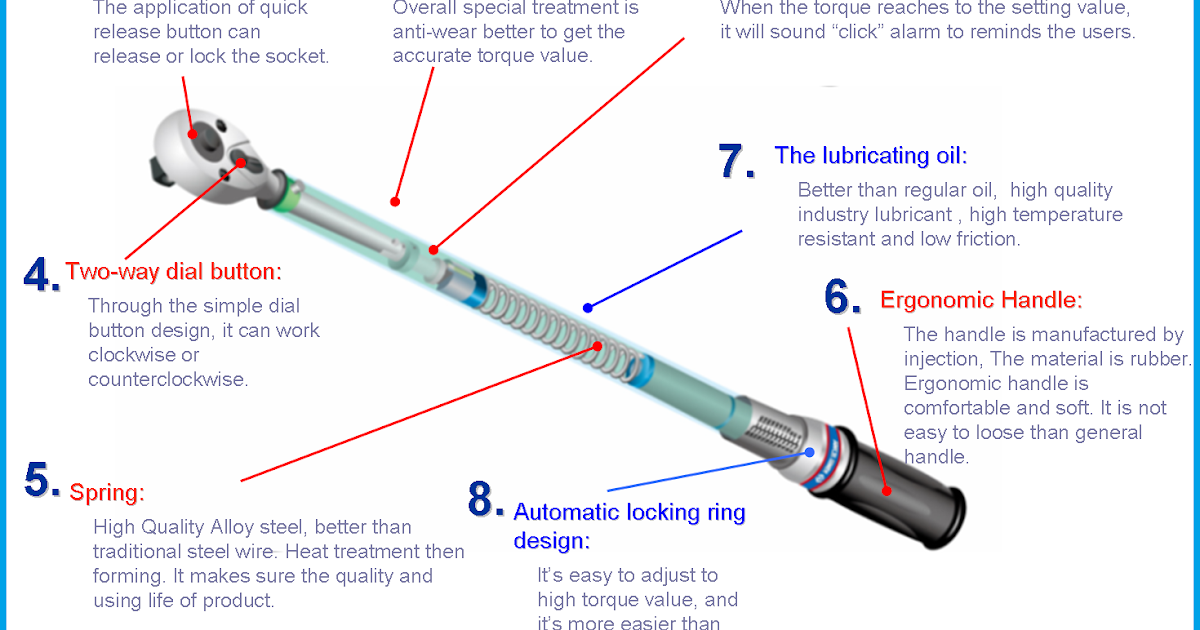
Torque wrenches, on the other hand, are engineered with a mechanism that exerts a specific amount of torque onto a fastener; which makes them the handiest tools when over-tightening situations are simply not an option; like while working with spark plugs, lug nuts, or for building or assembling engines.
It is fair to say that torque wrenches are super safe to use!
The likelihood of a torque wrench having a catastrophic failure, breaking, or stripping a bolt under maximum torque is minimum, but only if you don’t compromise their torque capacities.
Breaker bars are built to handle more generous torque limits, and their applications are far more intense.
Those tools are designed for heavier-duty taks, this means you get increased chances of shearing off a fastener, causing injury, or having a catastrophic failure while performing hardcore tasks.
So, beware of managing the tool securely and using safety glasses while working on heavier-duty projects.
This Olsa Tools extendable breaker bar is built using industrial-grade steel that has been appropriately heat-treated, it can handle 450 ft/lbs of torque, an extremely powerful tool!
However, numerous breaker bars on the market are able to handle up to 2,000 ft/lbs. But the strength or physique of the person using the tool will also determine the amount of torque applied.
A manual torque wrench like this Olsa Tools split beam torque wrench is constructed with a maximum torque strength of 250 ft/lb.
They might not deliver the amount of torque as their breaker bars counterparts, but when it comes to control they definitely take the win.
Their design creates a loud click sound and splits at the joint when you reach the desired torque value, which gives greater control over the tool while helping you complete tasks accurately.
The torque wrench is accurate up to +/-4% across the entire torque range.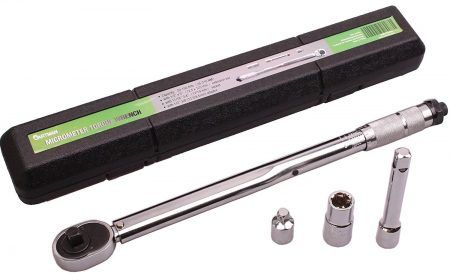 What a precise tool!
What a precise tool!
This is probably the single most differential factor. Here, breaker bars beat torque wrenches thanks to their non-ratcheting mechanism. It is simpler and easier to produce, making them far less pricey and more “replaceable” as they’re more budget-minded.
Meanwhile, torque wrenches are significantly pricier because of their specialized inner mechanism, which is more accurate, precise, and sophisticated. For companies this complex design calls for more time and better resources to produce the tool that best meets their customers’ needs. In simple words, a torque wrench goes a long way in terms of functionalities, and this is the main reason their price point is “less” affordable compared to other fastening tools.
This is a big no-no! We’ve explained now how to use a torque wrench and a breaker bar, both products deliver extremely professional results when used for their intended purposes. The problem with working on hardcore projects using torque wrenches is that you can push them easily beyond their capabilities. This can break the internals and damage the calibration of the wrench.
Considering their price, you don’t want to work on extreme heavy-duty projects with a tool that is supposed to be used for more precise applications. Plus, if you want to increase the longevity of your torque wrench, simply leave this to your go-to breaker bar.
Is not that either tool is “better” or “worse”, but simply that you’ll find yourself working on specific tasks where one is handier than the other.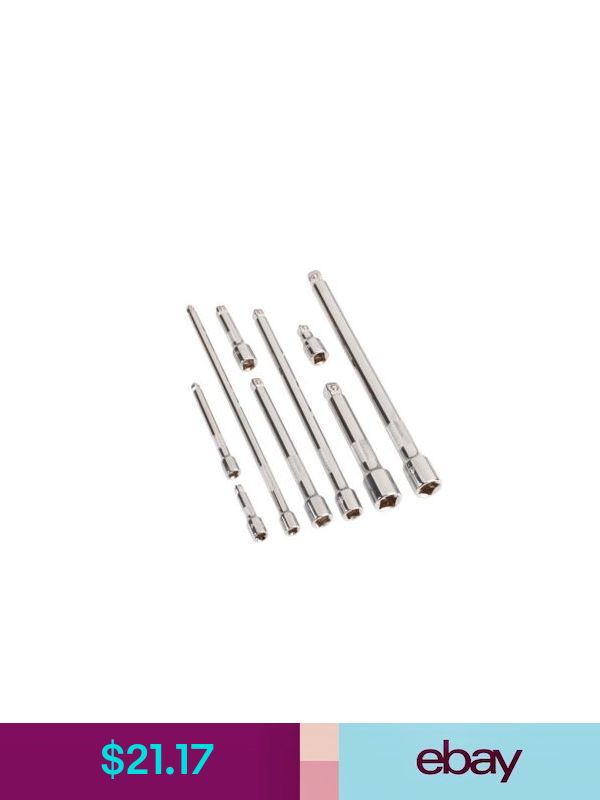 Does the project require a high degree of accuracy? A torque wrench is your best pick. Want to break loose very tight fasteners? Use a breaker bar. Professional mechanics have both as they are worth having for their convenience and ease of use.
Does the project require a high degree of accuracy? A torque wrench is your best pick. Want to break loose very tight fasteners? Use a breaker bar. Professional mechanics have both as they are worth having for their convenience and ease of use.
Head-to-Head Comparison: Torque Wrench vs. Breaker Bar
We believe that you are shopping from Canada. Do you want to shop on our Canadian site?
Switch to Canadian site
Don't show me this again
{% assign option_index = 0 %} {% for option in product.options %} {% assign is_color = false %} {% assign option_index = forloop.index0 %} {% assign variant_option = 'option' | append: forloop.index %} {% assign displayStyle = configs.displayStyles[option] %} {% assign sortOption = configs.listOrderOptions[option] %} {% if option != "Title" %}
{% assign values = "" %} {% assign values_available = "" %} {% if displayStyle == 1 %} {{ option }}
 variants %} {% assign value_available = variant.options[option_index] %} {% assign value_available_text = "&_&" | append: value_available | append: "&_&" %} {% unless values_available contains value_available_text or variant.available == false %} {% assign values_available = values_available | append: "&_&" | append: value_available | append: "&_&" %} {% endunless %} {% endfor %} {% for variant in product.variants %} {% assign value = variant.options[option_index] %} {% assign valuetext = "&_&" | append: value | append: "&_&" %} {% assign option_value = option | append: "-" | append: value %} {% unless values contains valuetext %} {% assign values = values | append: "&_&" | append: value | append: "&_&" %}
variants %} {% assign value_available = variant.options[option_index] %} {% assign value_available_text = "&_&" | append: value_available | append: "&_&" %} {% unless values_available contains value_available_text or variant.available == false %} {% assign values_available = values_available | append: "&_&" | append: value_available | append: "&_&" %} {% endunless %} {% endfor %} {% for variant in product.variants %} {% assign value = variant.options[option_index] %} {% assign valuetext = "&_&" | append: value | append: "&_&" %} {% assign option_value = option | append: "-" | append: value %} {% unless values contains valuetext %} {% assign values = values | append: "&_&" | append: value | append: "&_&" %} {% elsif displayStyle == 2 %} {{ option }}
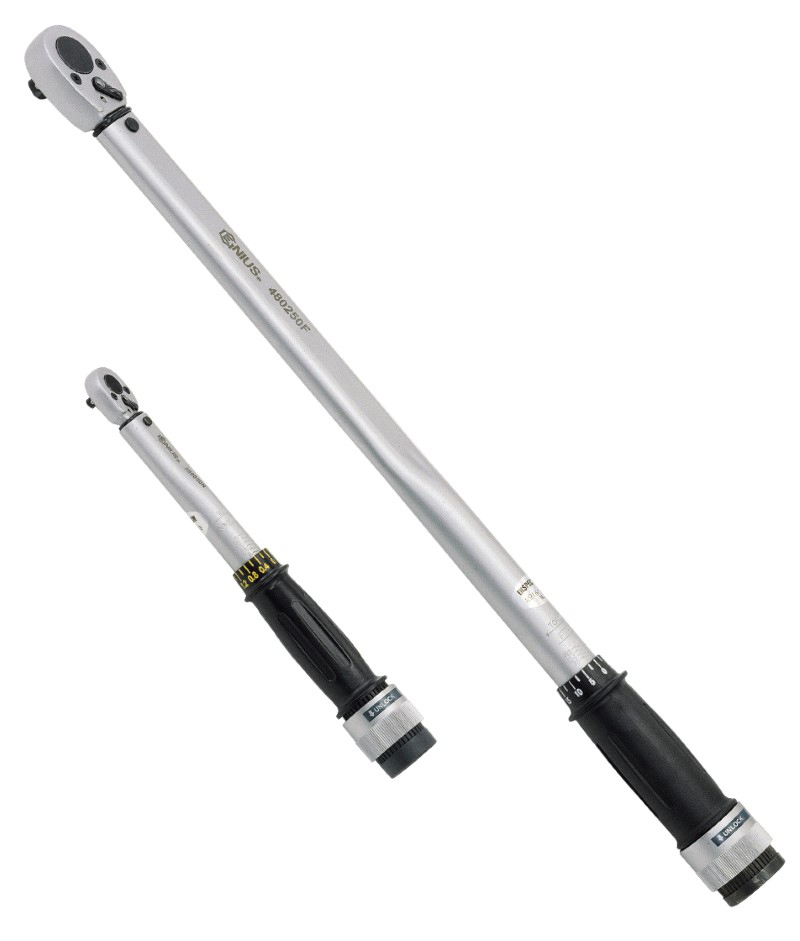 variants %} {% assign value_available = variant.options[option_index] %} {% assign value_available_text = "&_&" | append: value_available | append: "&_&" %} {% unless values_available contains value_available_text or variant.available == false %} {% assign values_available = values_available | append: "&_&" | append: value_available | append: "&_&" %} {% endunless %} {% endfor %} {% for variant in product.variants %} {% assign value = variant.options[option_index] %} {% assign valuetext = "&_&" | append: value | append: "&_&" %} {% assign option_value = option | append: "-" | append: value %} {% unless values contains valuetext %} {% assign values = values | append: "&_&" | append: value | append: "&_&" %} src="" img_url:="" endif=""> {{ value | escape }} {% endunless %} {% endfor %}
variants %} {% assign value_available = variant.options[option_index] %} {% assign value_available_text = "&_&" | append: value_available | append: "&_&" %} {% unless values_available contains value_available_text or variant.available == false %} {% assign values_available = values_available | append: "&_&" | append: value_available | append: "&_&" %} {% endunless %} {% endfor %} {% for variant in product.variants %} {% assign value = variant.options[option_index] %} {% assign valuetext = "&_&" | append: value | append: "&_&" %} {% assign option_value = option | append: "-" | append: value %} {% unless values contains valuetext %} {% assign values = values | append: "&_&" | append: value | append: "&_&" %} src="" img_url:="" endif=""> {{ value | escape }} {% endunless %} {% endfor %} {% elsif displayStyle == 3 %} {{ option }}
{% elsif displayStyle == 4 %} {{ option }}
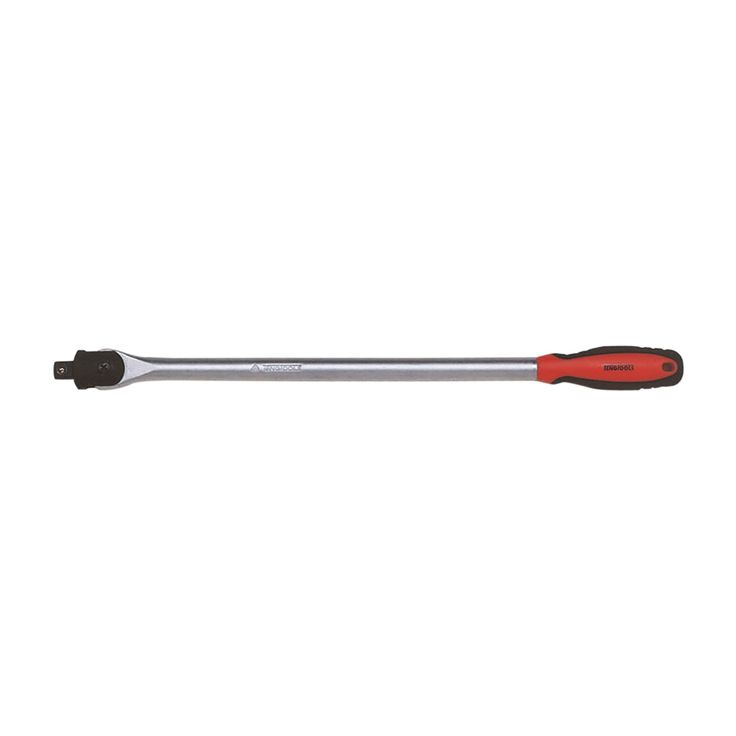 enableMandatory == true %}
enableMandatory == true %} {% endif %} {% if configs. enableMandatory %}
enableMandatory %}
{% endif %}
{% endif %} {% endfor %}
{% if configs.showNumberStock == "enable" %}{{ configs.stock_message }}
{% endif %} {% endif %}Torque wrenches and breaker bars have several differences in limits, goals, maximum torque, and more. In this guide, you will learn about their uses, comparison, advantages, and disadvantages. So, can you use a torque wrench as a breaker bar?
Breaker bars are used for removing tight bolts and nuts by increased torque application. Meanwhile, torque wrenches are used for tightening nuts and bolts utilizing the established maximum torque level.
More so, using torque wrenches for loosening instead of tightening fasteners will lead to more torque application than what a torque wrench can handle and can break your tool.
Torque wrenches can be used as breaker bars, but they are not advisable, and they are not worth the risk. Besides, the price tag of breaker bars is very low compared to torque wrenches.
Besides, the price tag of breaker bars is very low compared to torque wrenches.
There are certain instances that it could work, especially when you are on the maximum torque.
Remember that torque wrenches and breaker bars have significantly different uses. Hopefully, this guide informs you of everything you need to know about their differences.
Torque wrenches are like ratchet with a small handle compared to breaker bars.
You should not drop them and overload them with a pipe extension. Also, storing them improperly in areas with high humidity can easily lead to corrosion.
The man in the video explains how torque wrenches work by enumerating the different styles, such as a beam torque wrench with a scale that will move the indicator to it on the handle after reaching a certain torque.
His next example is the dial gauge torque wrench which works similarly to the beam torque wrench.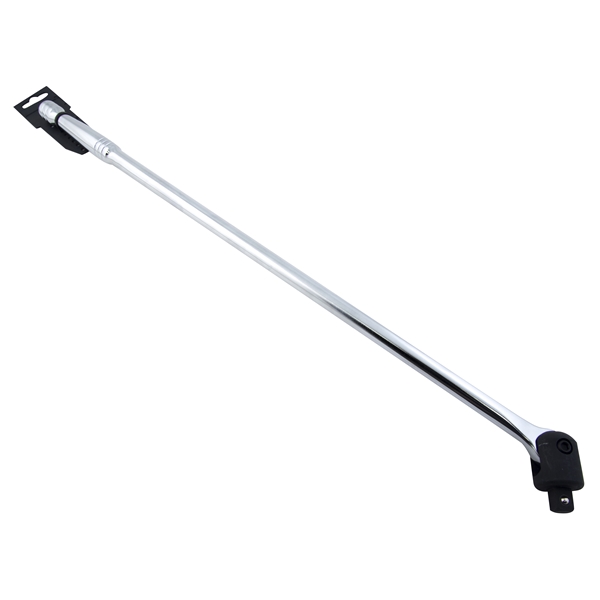 The only difference is it moves the dial after the handle reaches the desired torque.
The only difference is it moves the dial after the handle reaches the desired torque.
Also, it will move the indicator to show you how much torque you applied to the nuts and bolts.
The split beam torque wrench is simpler to use because it has a dial on the side that you can move to set your desired torque and makes a clicking sound. He continues with the digital torque wrench that is more advanced than others because it can measure ft-lbs and also angles, which is great for automobiles.
Lastly, click-style torque wrenches come in different styles and are more expensive. They work by screwing the lock to tell you when to stop by turning the handle.
Turning the handle lets you increase the spring force and measure the force with spring compression. When the desired torque is achieved, you will hear an audible click.
Breaker bars are used with socket wrenches for loosening nuts, bolts, and other fasteners. Also, they are used when fasteners are too tight to remove and cannot be undone by smaller tools like spanners and ratchets.
Also, they are used when fasteners are too tight to remove and cannot be undone by smaller tools like spanners and ratchets.
Breaker bars and torque wrenches are quite similar. However, they have differences in terms of the following.
FunctionBreaker bars are used for removing tightened nuts and bolts that smaller tools cannot do. They are sturdy enough and can resist high torque levels without breaking easily.
Although they can also be used to tighten fasteners, you should avoid overtightening with this tool.
On the other hand, torque wrenches are instruments used for precisely tightening nuts and bolts to a specific point. Having automated ones can take this step faster and make it more precise.
So, if you need precise control for application, the better choice is a torque wrench.
DesignBreaker bars possess the same drive sizes as torque wrenches but have longer handles.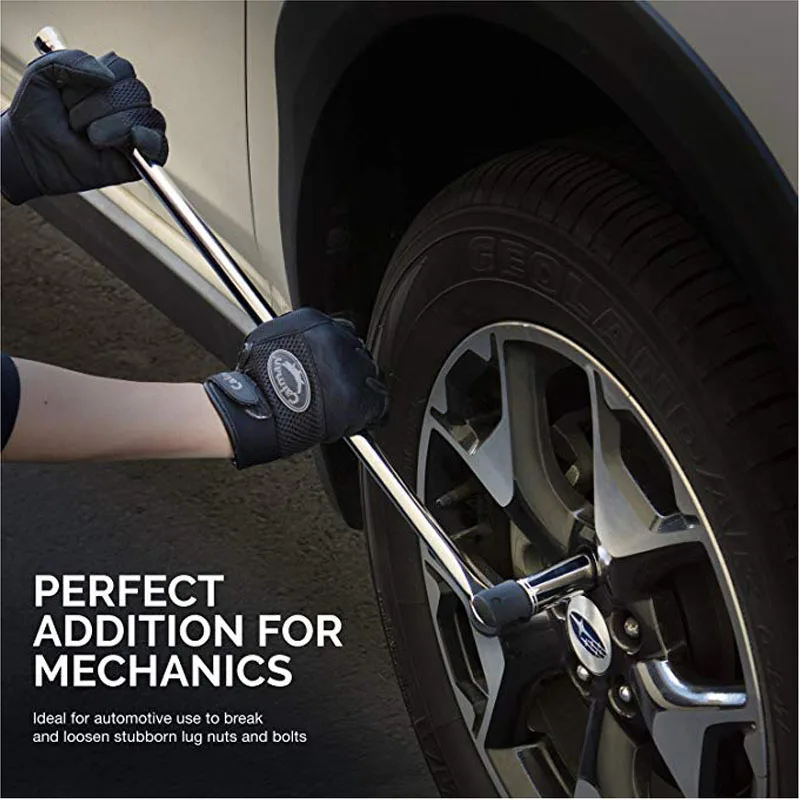 Also, their handles are made of solid metal which is convenient for withstanding high torque mounts.
Also, their handles are made of solid metal which is convenient for withstanding high torque mounts.
Meanwhile, torque wrenches come in various sizes and shapes with drive sizes of ¼, ⅜, ¾, and ½ inches. They are smaller drives with short handles, making them great for working on small spaces such as wheel wells. In addition, they are lightweight and easy to wield.
Torque wrenches are generally more efficient than breaker bars because breaker bars, unlike torque wrenches, cannot gauge the desired torque, resulting in higher chances of overtightening.
Breaker bars are heavily designed and bigger. Meanwhile, torque wrenches are light but are durable enough for use even in the most demanding industrial environments.
Torque wrenches work like measuring devices to measure the exact torque required. They’re used for tightening bolts and nuts, and they can be used with a torque angle gauge.
Meanwhile, breaker bars are more efficient than torque wrenches because they can be used for loosening fasteners as well as tightening them. However, it must be done with caution to avoid overtightening.
However, it must be done with caution to avoid overtightening.
Breaker bars must be used carefully as their applications are intense and can result in injury when the long handle gets damaged.
Also, breaker bars are used for fasteners that other tools cannot undo, so bolts might shear off and cause metal splinters flying all over the place. Wearing glasses is a safety measure when using breaker bars.
On the other hand, torque wrenches are safe to use, and the likelihood of experiencing failures and accidents is small when used as intended.
Torque wrenches are highly advanced equipment that lets users tighten bolts and nuts to a specific torque degree, making them ideal for high-technology engines such as automobiles.
They are more expensive than breaker bars because of their internal components, unlike breaker bars that only have a few to function.
Generally, breaker bars are half the price of torque wrenches.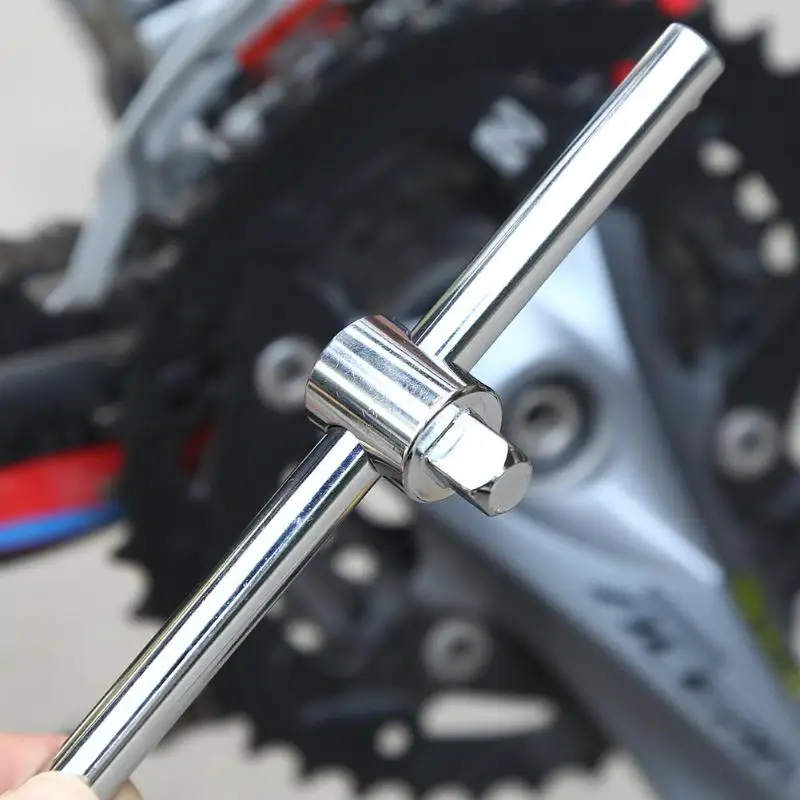
| Torque wrench | Breaker bar | |
| Maximum torque | Can work up to accept up to 150 ft/lbs of maximum torque for tightening fasteners | It can handle up to a maximum torque of 2,000 lb |
| Goals | Used for tightening bolts to a certain preset torque | Are powerful to remove tightened bolts |
| Limits | They only have a limit of 150 ft/lbs and working beyond that can cause damage to the equipment | Has higher torque limits up to 2500 ft/lbs |
Here are our top picks for torque wrenches and breaker bars. We also included the features and descriptions of each.
Key Features
The Park Tool Ratcheting Click Type Torque Wrench has been a necessity for mechanics because it can precisely measure and apply the right torque amount to threaded fasteners.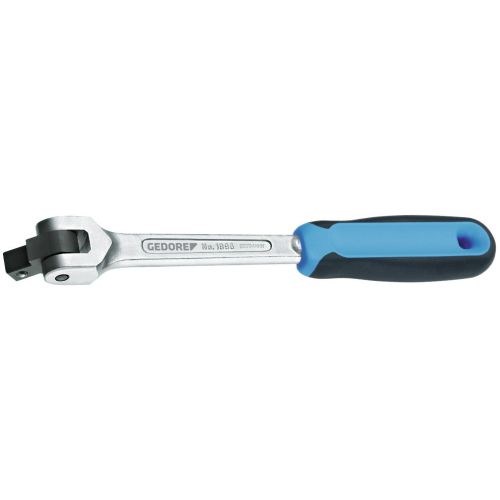
It has a range of 2 to 14 Nm and can be used for lower torque settings that users would need for applications in handlebars, brakes, stems, and many other components.
Key Features
The Capri Tools 1 in. Drive 40 in. Extended Leverage Breaker Bar can let you achieve the additional leverage you need to break loose stuck and frozen fasteners. To make the job easier, they can be extended up to 40 inches in length, which is 50% longer than standard models.
In addition, this durable breaker bar functions as an extension bar for holding socket-wrench-style sockets.
Torque wrenches are used on bolts that need tightening to a certain level. They do not feature a ratcheting mechanism because ratchets are used for simple tightening bolts without further specifications. Torque wrenches then come in to finalize the torque setting.
They do not feature a ratcheting mechanism because ratchets are used for simple tightening bolts without further specifications. Torque wrenches then come in to finalize the torque setting.
Breaker bars and torque wrenches have a lot of uses. Here are some of them.
Loosening a car tire’s frozen lug nut is one of the best uses of breaker bars. They can allow more leverage and lighten operation tasks by easily loosening tight bolts without straining your hands and back.
You can also use breaker bars as a ratchet. However, breaker bars have only one function: to loosen seized bolts and nuts. So, its long bar won’t be convenient to use, and the removal process will not be as effective as using a real ratchet.
Changing tires is a common service of mechanical workshops, and torque wrenches can do this operation faster to increase profitability. Under-tightening or over-tightening lug nuts can cause wheel failure.
Under-tightening or over-tightening lug nuts can cause wheel failure.
Over-tightened lug nuts can get broken and stretched when hitting road bumps, and under-tightened lug nuts can cause it to come loose and lead to wear and wheel separation from the hub. Also, uneven tightening can cause vibrations, broken nuts, and coming off of wheels.
Another use of torque wrenches is to properly torque electrical wirings to make them more energy-efficient. This is because loose connections can cause energy loss. So, checking connections for proper torque can contribute to saving energy.
There are several kinds of torque wrenches and breaker bars that slightly differ in principles and uses.
There are numerous types of torque wrenches, and you will learn more about them in this section.
Click Type Torque Wrenches
The click type is the most common and is entirely mechanical. This works by setting the torque value on its handle using the adjuster nut, tightening the nut, and hearing the clicking sound. It cannot prevent overtightening.
This works by setting the torque value on its handle using the adjuster nut, tightening the nut, and hearing the clicking sound. It cannot prevent overtightening.
Split Beam Type Torque Wrenches
This torque wrench has fewer parts and can last longer than the click-type wrench. It has two beams, one on the handle and the other on the head. Some have an indicator window, which is a feature to look for.
Digital Torque Wrenches
Digital torque wrenches are more expensive than mechanical ones and are the most effective in storing preset torque values for convenience. They also have audible signals, making the extra cost worth it.
Slip Type Torque Wrenches
Slip-type torque wrenches are effective because they can lose grip after reaching the desired torque level, which is beneficial for preventing overtightening. It won’t allow you to see the torque when applied, so ensure that you set the right torque you need.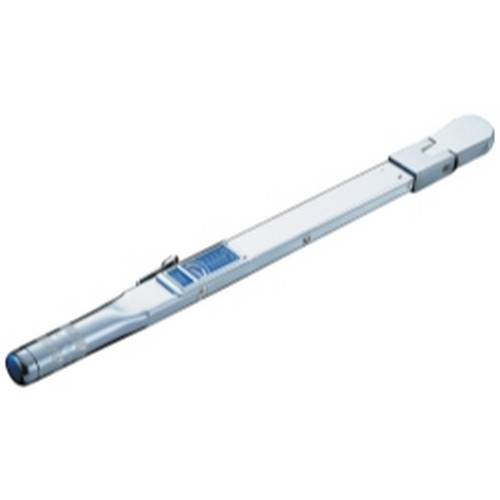
Intelligent Torque Wrenches
This type works slightly the same as digital torque wrenches, but they can be programmed and updated. They can recognize the fastener type to provide the torque value needed, making them expensive and unnecessary for personal use.
Beam Type Torque Wrenches
This type of torque wrench’s benefit is there’s no need to preset the torque as it is visible as you turn it. It can be hard to see while using, especially on greater torques that need more effort. However, they are inexpensive, easy to use, and great for classic motorcycles and cars.
Here are a few types of breaker bars, and you will learn more about them in this section.
Hinge Handle Breaker Bars
These breaker bars have a hinge near the head that allows the head to swivel and access nuts and bolts from different angles. Also, they are used with socket bits and sockets to loosen overtightened fasteners.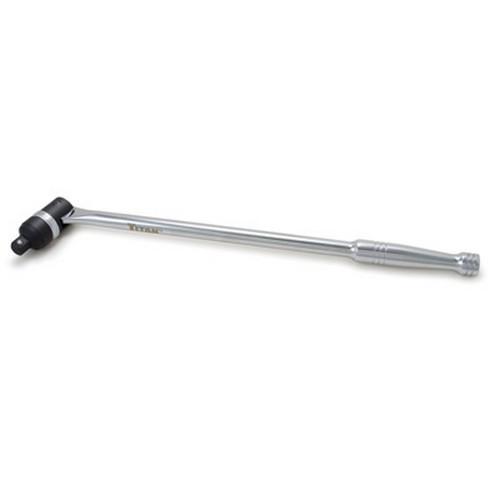
Ratchet Breaker Bar
Ratchet breaker bars are ratchet drivers with very long handles. It eliminates the requirement for a second piece of material to decrease the chances of tool slipping which can damage the bolt and tool and cause injury to the operator.
A torque converter is similar to a vehicle’s clutch with manual transmission. It differs from manual transmission by using fluid to transmit power to allow transmission change and prevent your engine from stopping due to overload.
A torque wrench is a type of wrench designed to apply a tightening torque to a precisely specified value. The scope of the key is very wide, it is indispensable in the process of assembling automotive equipment, construction and industrial units, as well as the installation of any structures where there is a need to control the tightening torque.
Why is it important to maintain the exact tightening torque of threaded connections? The bolt, when properly tightened, is designed to withstand some changes in temperature, pressure and load in general. When conditions change, the threaded connection adapts without affecting the operation of the mechanism. If the bolt is overtightened, there is a risk that it will burst from stress or overheating. And if you don’t reach it, there is a risk of unwinding the connection.
Tightening torques for automotive and motorcycle applications are specified in the special service book "Service manual". If a torque wrench is used in domestic conditions, you can find out the tightening torque for different diameters and types of bolts in the table OST 37.001.050-73 or the table of standard tightening torques.
There are three main types of torque wrenches: pointer, limit or "snap" wrenches and digital torque wrenches.
Dial or pointer torque wrench works on the principle of a dynamometer and indicates the amount of force applied during operation.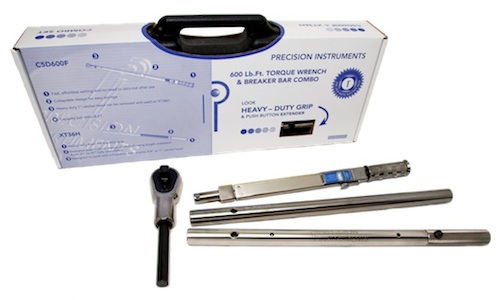 The design of this type of wrench consists of a housing in which a dynamometer and an indicator with an arrow are located, which display the tightening torque.
The design of this type of wrench consists of a housing in which a dynamometer and an indicator with an arrow are located, which display the tightening torque.
Today this type of key is used less frequently than other types due to its error, which can be 4-20%. Also, the downside is that the tightening torque must be carefully monitored during the tightening process. There is also no ratchet mechanism, which makes it difficult to work in hard-to-reach places, and makes this wrench not the best option for motorists.
Despite the shortcomings, the switch wrench also has a number of positive characteristics that determine its demand in many industries. The key is made of solid hardened steel, which ensures its strength, reliability and durability. Due to the simplicity of the design, the key has a low cost. A sufficiently large working interval of up to 300 Nm allows the use of a wrench for a wide variety of threaded connections.
The limit or "snap" torque wrench is one of the most popular and in demand today.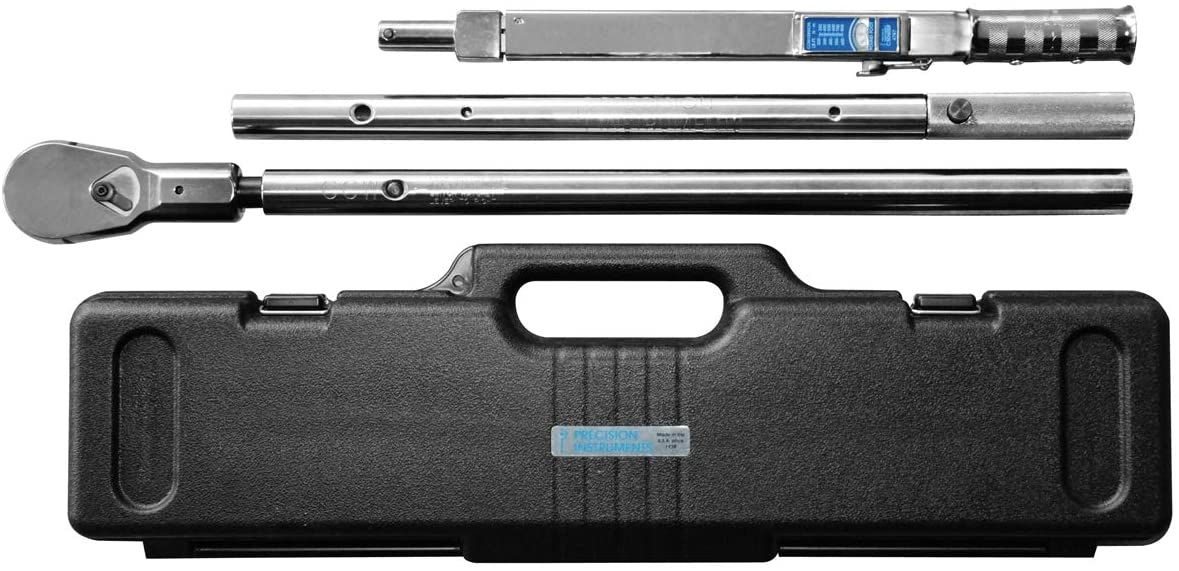 This type of key combines high accuracy, affordable price and ease of use, thanks to which it has won the trust of users.
This type of key combines high accuracy, affordable price and ease of use, thanks to which it has won the trust of users.
The principle of operation of this key is to pre-set the required value, after reaching which, a distinct click is heard, signaling the need to complete the work.
The design of the wrench is a ratchet with a connecting square for the socket head. On the handle there is a vertical and horizontal scale for setting the tightening torque.
Setting the required force is carried out as follows: first you need to select on the scale the closest value to the required one, then tighten the handle and set the zero mark at the level with the selected one. After that, you should add one by one scrolling the horizontal scale until you get the desired number.
So, for example, we need to set a value of 32 Nm, and the closest on the scale is 28 Nm. In this case, it is necessary to bring the handle with a zero mark to the indicator 28 and twist the horizontal scale on the handle by another 4 points, thus achieving the required torque of 32 Nm.
Digital torque wrench is the most accurate and user-friendly torque wrench, with an error of less than 1%. This type of key is in a more expensive price segment due to an extended set of functions.
The design of the digital key is characterized by the presence of a small display on which the indicators are displayed. Depending on the model, such a wrench may be equipped with audible, visual, or both indications of reaching the torque. Also, this key can be equipped with a memory function, which stores the latest indicators, time, date and even the brand of the car.
Digital, like the limit wrench, is equipped with a ratchet mechanism with reverse, which allows you to conveniently work with fasteners that have left and right threads.
One type of digital torque wrench is a power-operated adapter wrench. The device is connected to a ratchet or wrench, and an end head is put on the adapter. The main feature of such a wrench is its versatility, as it is able to work both with a preset value and as a dynamometer - displaying the amount of force at a particular moment of tightening the bolt.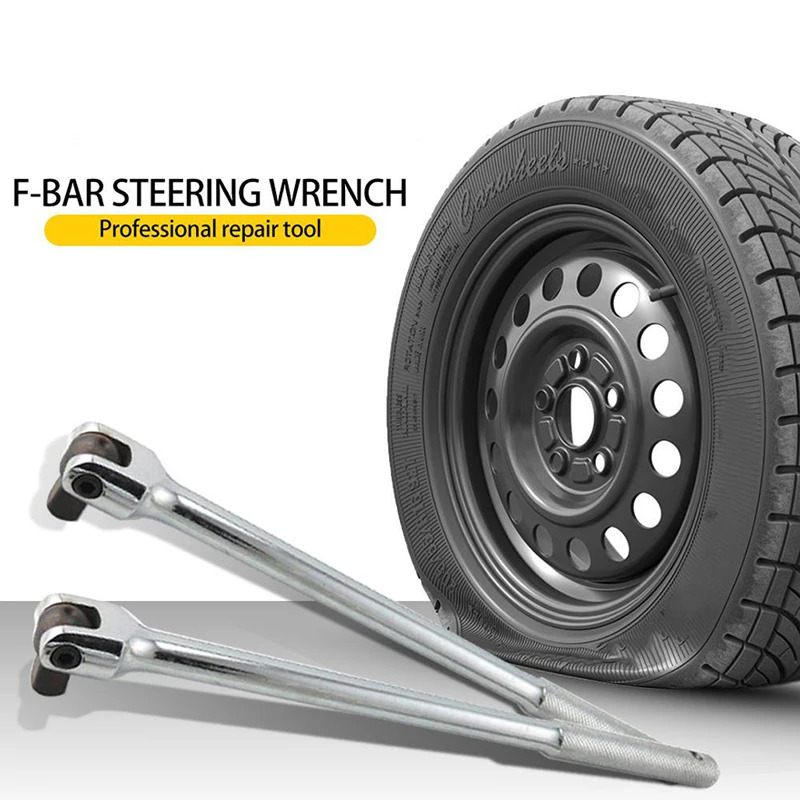 This is convenient if the user needs to tighten the bolt with a torque that is less than the lower limit of the wrench range. The device runs on batteries. Setting the tightening torque, switching modes and memory management is carried out by buttons and menus on the display.
This is convenient if the user needs to tighten the bolt with a torque that is less than the lower limit of the wrench range. The device runs on batteries. Setting the tightening torque, switching modes and memory management is carried out by buttons and menus on the display.
The selection of a torque wrench should be based on the scope and specifics of the work of the master. If you need a simple and reliable key, you should opt for a switch, if you need an accurate, practical and affordable one, opt for the ultimate one, and if you are looking for the most convenient key for high-precision work with a minimum error, you should take a digital one.
Torque wrench operating instructions
To avoid incorrect operation of the wrench, do not continue to tighten the connection after it clicks.
Do not exceed the maximum torque mark.
Do not use a torque wrench as a normal ratchet for tightening fasteners that do not require special conditions.
Do not use additional leverage or own weight to increase torque.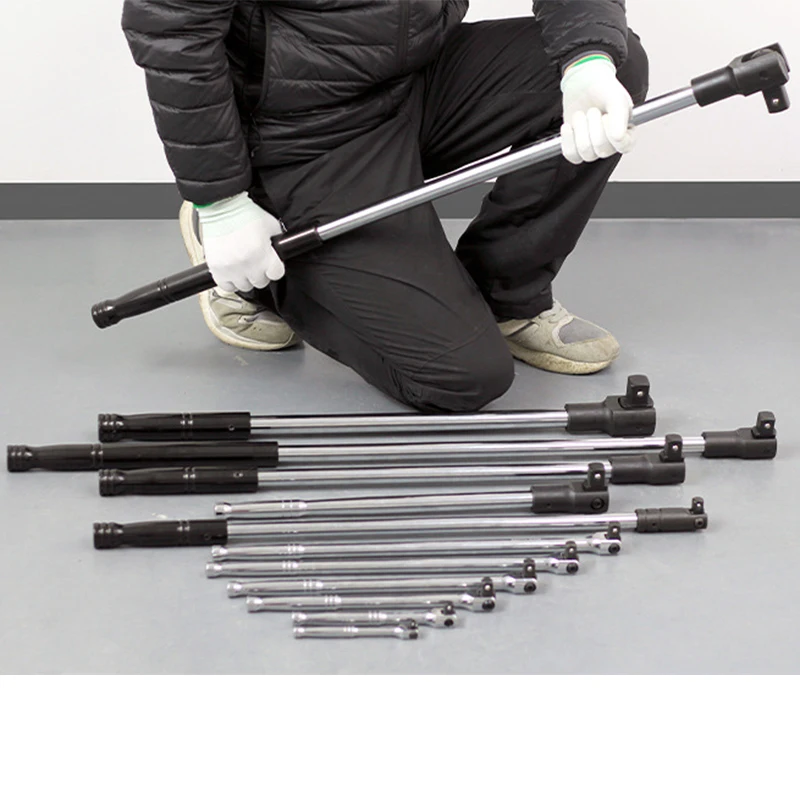
It is recommended to avoid soiling and dropping the instrument.
It is recommended to calibrate the instrument regularly.
Only store the key with a loose spring in a dry place, away from high temperatures.
If you have never worked with a torque wrench and do not know what it is and why it is needed. Then this article is for you. Why do you need such a key in the first place? It is necessary for tightening threaded connections with a certain force, the so-called moment of force or tightening torque. The unit of measure for the moment of force is the newton meter, Rus. Nm, English Nm.
So, in the technical data for servicing a car or other technical unit, data is provided with what force this or that threaded connection should be tightened, even the wheels of the car must be tightened under a certain force. And in order for the nuts to be tightened correctly, and there were no undertights and constrictions, the threads did not break, and there were no loose, leaky connections, and the car worked properly, it is necessary to follow all the recommendations for servicing the equipment.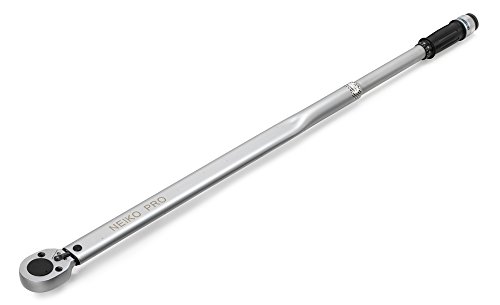 And in solving this problem, a torque wrench will become a reliable assistant.
And in solving this problem, a torque wrench will become a reliable assistant.
Torque wrench outwardly looks like a ratchet, with the main difference being that it has a scale that determines the force applied by the wrench to the nut.
The scale can be with an arrow in the form of a pressure gauge, in digital version with a digital screen, or the scale can be carved on the key, and a “click” will serve as an indicator of reaching the desired force. The last option is one of the most common and not expensive. Therefore, we will consider such a key in more detail.
The key at its base has a rotating handle, on which an auxiliary scale from 0 to 14 is carved and the main scale applied on the immovable part of the key. Torque wrenches cover a limited range of forces. For example, from 5 to 25 Nm., From 70 to 350 Nm. etc. This main scale displays the range in which the key works.
For example, it is necessary to tighten the nut with a force of 100 Nm, take a key that operates in the range from 40 to 210 Newton meters, and screw a movable handle into the base of the key, which, when tightened, will move along the immovable scale of the key.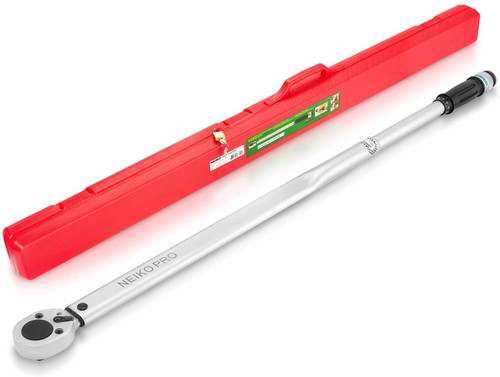 When the movable handle reaches the mark 98 on the main key scale, stop. But it will be only 98 Nm, in order to reach 100nm, we focus on the additional scale on the rotary knob, you will need to scroll the knob even to mark 2 on the second additional scale. In the sum of 98 + 2 we get 100 Nm.
When the movable handle reaches the mark 98 on the main key scale, stop. But it will be only 98 Nm, in order to reach 100nm, we focus on the additional scale on the rotary knob, you will need to scroll the knob even to mark 2 on the second additional scale. In the sum of 98 + 2 we get 100 Nm.
Next, you need to put on the socket of the required size on the key, and start tightening the nut. Upon reaching a force of 100 Nm, your key will make a characteristic click, it will be even more felt by your hand than perceived by ear. This will mean that the required force has been reached and the tightening must be stopped. If someone is interested in what will happen to the key next if you don’t stop, I’ll answer, nothing, it will click every time you tighten it and work like a regular knob, continuing to tighten your nut more and more. But why then buy a torque wrench?
Do not use a torque wrench like a regular wrench if you want it to last for a long time, because no one has canceled the wear of the tool. And most importantly, after work, always unscrew the handle back to the zero position. Since there is a spring inside the key that compresses when tightened, and if left for a long time in a compressed static position, it will lose its properties, which will lead to an increase in error during operation. Speaking of the error, it is recommended to periodically verify the keys, because you need to be sure that the key fixes exactly the force that you need. I warn you that the number of enterprises producing such verification is limited, and for public services, such a service is expensive.
And most importantly, after work, always unscrew the handle back to the zero position. Since there is a spring inside the key that compresses when tightened, and if left for a long time in a compressed static position, it will lose its properties, which will lead to an increase in error during operation. Speaking of the error, it is recommended to periodically verify the keys, because you need to be sure that the key fixes exactly the force that you need. I warn you that the number of enterprises producing such verification is limited, and for public services, such a service is expensive.
The size of torque wrenches, depending on the range in which they work, can vary from small ones with a ¼ square seat to huge ones with a ¾ seat square. But there are situations when the force with which you need to tighten a threaded connection exceeds the maximum allowable tightening value of the most powerful wrench available on the market! Then you may need a tool - multiplier . This is gearbox-amplifier , which, with the help of gear systems, increases the force exactly three times.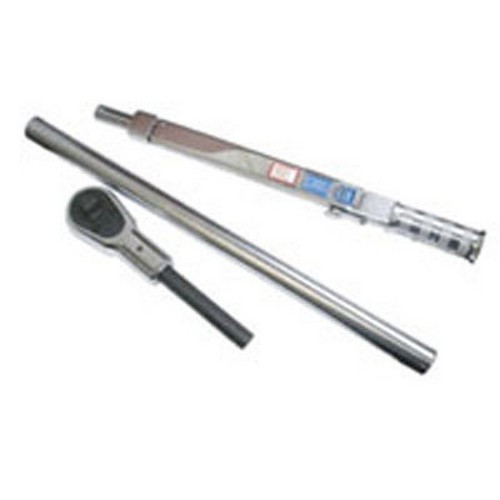 If you insert the key into the multiplier and set the force to 800 Nm, then when the key is clicked, the multiplier will already give out 2400 Nm.
If you insert the key into the multiplier and set the force to 800 Nm, then when the key is clicked, the multiplier will already give out 2400 Nm.
There are several types of torque wrenches:
1) arrow keys (they are characterized by a low price and the greatest error in measurements, about 6% - 8%, with the exception of professional indicator-type models). Suitable for work that does not require high precision when tightening threaded connections.
2) Limit type (snap type) - are in the middle price range, have a small error (about 4%), most of them are calibrated at the factory and have an attached calibration certificate. Torque wrenches of the limit type are the most versatile and frequently used by both professional service workers and amateurs.
3) Torque wrenches with digital torque indication are the most expensive, but also the most accurate. Most often used either in production or in service stations. The error is about 1%.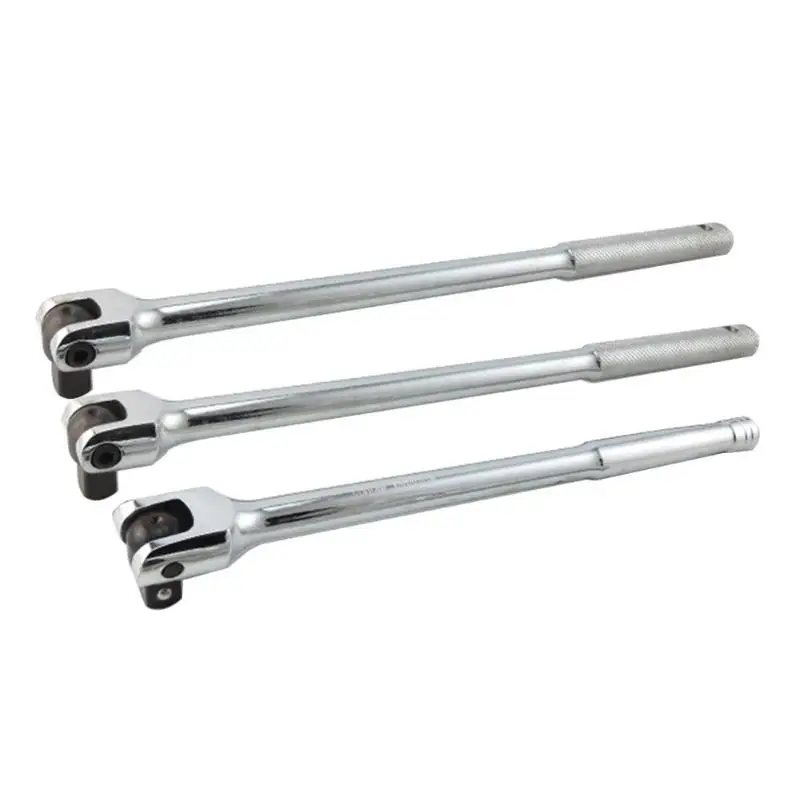 They have the function of uploading data to Excel, the function of programming a task sequence and many others.
They have the function of uploading data to Excel, the function of programming a task sequence and many others.
SWITCH
The cheapest option. Outwardly similar to a ratchet. Scale (1) and arrow 9 are attached to the body of the key0061 (2) . When tightening, the arrow remains in place, and the scale shifts.
Indicator type - less convenient to use (except for professional models).
LIMIT TYPE Torque Wrench
These torque wrenches have a limited range, different sizes and different socket squares. Accordingly, when choosing a key, you will have to take this into account. Approximate values look like this:
0.5 kg/m to 2.5 kg/m - 1/4" square
1.9 kg/m to 11 kg/m - 3/8" square
from 4.2 kg/m up to 21 kg/m - 1/2" square
from 7 kg/m to 35 kg/m - 1/2" square
from 8 kg/m to 40 kg/m - 3/4" square
from 10 kg/m to 70 kg/m - 3/4" square
from 14 kg/m to 200 kg/m - 1" square
Most often, the force on the key scale is indicated in Newtonometers Nm
10 Nm approx = 1 kg/m.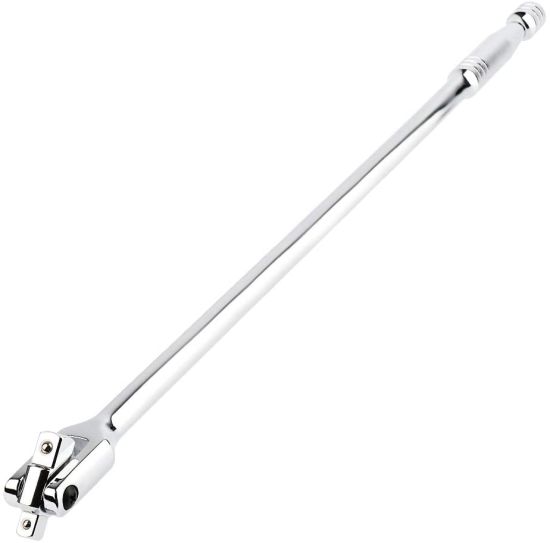 Approximate tightening torques for threaded connections can be found here. It is not advisable to use the key at the extreme values of the operating range.
Approximate tightening torques for threaded connections can be found here. It is not advisable to use the key at the extreme values of the operating range.
The procedure for working with such a key is as follows. Loosen lock nut (1) Nm(2) scale is marked on the body of the wrench and digital scale (3) is marked on the rotary handle. When the handle is rotated, the zero risk of the scale (3) must coincide with the risk on the body of the key (2) , which will be the set limit tightening torque Nm. Then, turning the knob clockwise, you add the digital values of the scale (3) to the first set value until the next match with zero risk. After setting the required force, fix the lock nut and start tightening. When the set force is reached, a loud click is heard. After that, the rotation must be stopped.
Scaled window limit type torque wrench
Slightly more expensive, but much more convenient to use. The handle rotates much easier, the lock nut is fixed with a click, not twisting, and you see the set value in finished form.